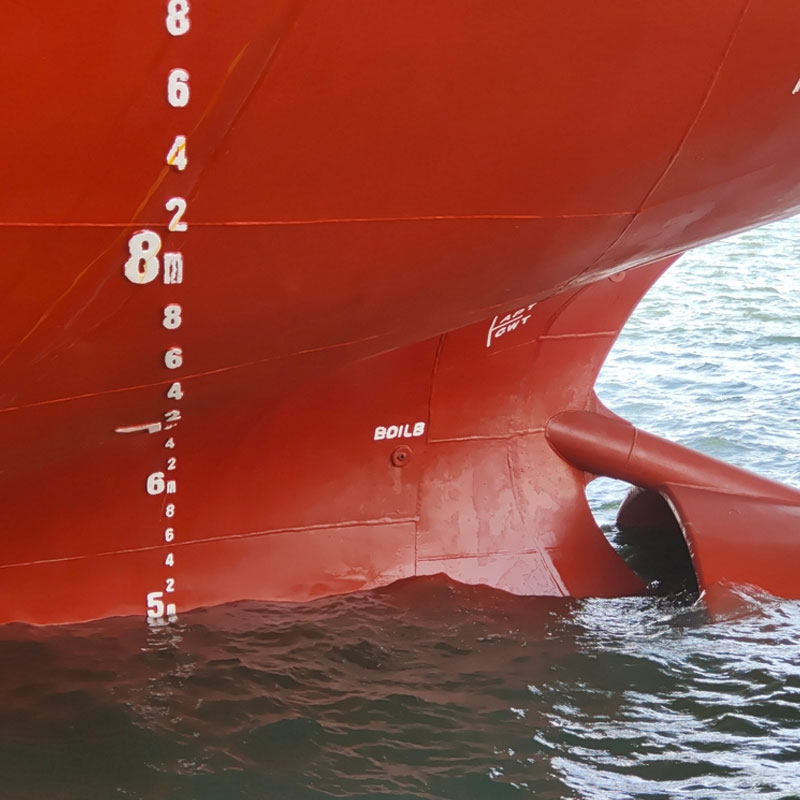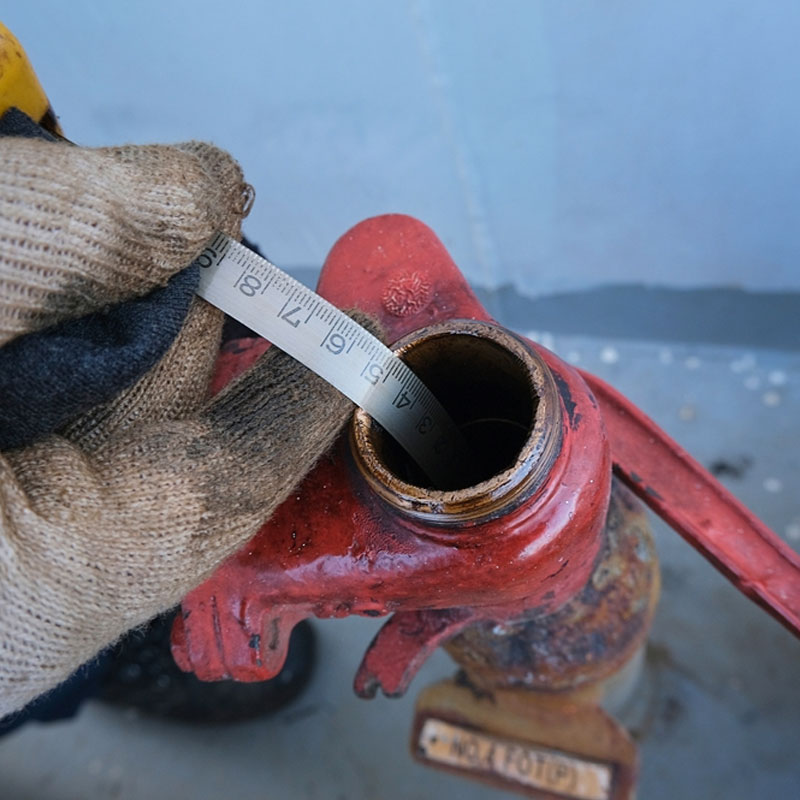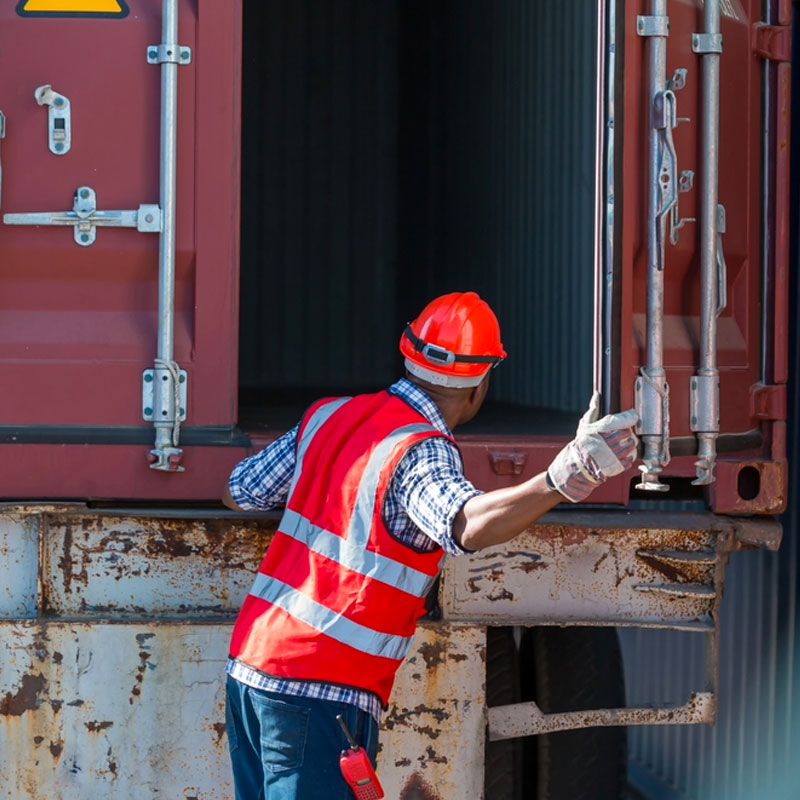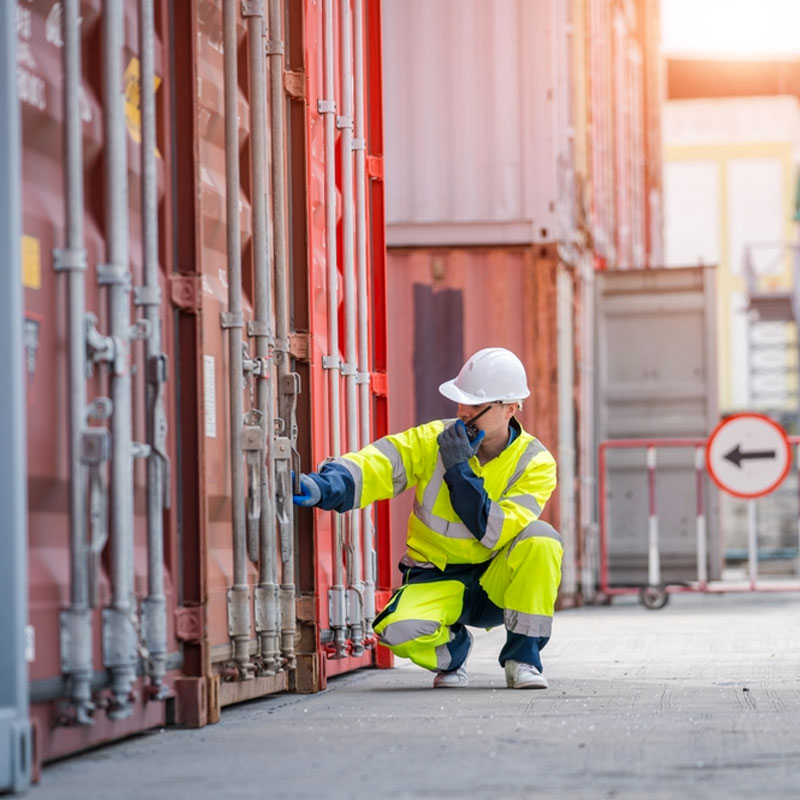Professional Marine Survey Services

Draft Survey
Draft surveys enable ship operators, owners and engineers to conveniently calculate various important quantities without investing significant amounts of time on trivial computations. Draft surveys require only a measurement of the water displaced by the vessel before and after the cargo is transferred, along with a measurement of the water's density. Water displacement is measured through draft marks on the ship and converted to a volume using draft tables. It is often difficult to accurately read the draught because of prevailing weather conditions and the presence of waves on the water surface. A vessel may have also developed a slight roll, leading to further inaccuracies.
- Reading of Draft Marks of Six Points i.e, Forward, Mid-Ship and after both sides of the ship.
- Collect the Sea Water of dock water density.
- Deductible weight by measuring and sounding of each nominated Ballast Tanks, Fuel Oil, Fresh Water exiting on board at the time of survey.
On / Off Hire Bunker & 221B Survey
Bunker Quantity Survey, also known simply as a Bunker Survey, is a quantitative examination of Fuel Oil delivered to a vessel from a supplier. Commonly used Loss Control tool to track significant variances of cargo quantities between the supplier and receiver.
The on/off hire condition survey is an inspection of vessel's holds, main deck, cargo working areas and external shell plating. It is performed in order to identify any damage present prior to the vessel going on/off hire. The survey report should include a detailed description of a vessel's cargo spaces/deck areas structural condition, cargo space cleanliness, bunkers on board, listing of the vessel's statutory certificates, portable securing equipment, etc.
Conduct a thorough final gauging of all the vessel's tanks and record the actual quantity of bunkers onboard after completion of bunkering. Establish the Barge delivered quantity and the vessel received quantity. Seal and label the bunker samples. See sampling procedures for more details on bunker sampling.
The 221B Survey, also known by Bunker Spot Survey, is the measurement of vessel's bunkering figures at the time of the Survey. It is not unusual to find more fuel oil on board than the quantities declared by the vessel on the log book. This way, does its best in order to find hidden fuel oil on board.


Empty Container Survey
Inspect the container by conducting an external inspection and an internal inspection using suitable equipment. Inspect a container to be loaded with non-consumable goods for line insect pests in residues, live insect pests on the structure of the container.
Container Inspection process is recommended for all containers. Procedures should be in place to verify the physical integrity of the trailer structure prior to stuffing, to include the reliability of the locking mechanisms of the doors.
Hull Damage Survey
Hull survey are therefore not only comprehensive means of detecting deficiencies or monitoring structural condition, but also of defining schemes for inspection between the last overhaul and before the occurrence of failure. Means of detection of defects and condition monitoring are inter alia: Visual inspections, Non-destructive testing (NDT) and calibrating, Examination of tightness, function and center of gravity and Measurements of thickness, vibration.
Schemes of inspection are periodical survey requirements which by virtue of design and operational experience are envisaged to discover deficiencies completely and early enough before they may lead to breakdown.


Indian Cargo Gear Registration Survey
Our Inspector are approved by the GOVERNMENT OF INDIA, MINISTRY OF LABOUR & EMPLOYMENT (Dock Safety, Health and Welfare), we provide services for mid-ship Hose Handling Cranes and their Loose Gears, Dry Cargo Derricks and Loose Gears, Mobile Crane, Reach Stacker, Shore Base Lifting Appliance and Ship Lifting Appliance. All statutory inspections, tests and surveys of cargo handling equipment must be entered in the chain register and duly stamped and signed by the attending surveyor. These surveys are to include all permanently attached hooks, swivels etc. It is the responsibility of the Chief Officer, under the direct supervision of the Master, to ensure that all the permanently attached equipment is always in accordance with that stated on the test certificates, and they are to be clearly marked as such. All lifting appliances shall be thoroughly examined by a competent person once at least In every 12 months. Where the competent person making this examination forms the opinion that the lifting appliance cannot continue, the maintenance of the cargo handling gear will be included in a planned maintenance system as required by the ISM Code. There are two basic requirements when maintaining cargo gear: (1)To keep the equipment in good safe working order and (2) To keep the supporting documentation in good order.
Pre-Shipment Cargo Condition Surveys
To inspect and assess the condition of product(s) and report on deficiencies at the time of shipment, but prior to reaching ship's rail. In most instances the assessment will be carried out at place of storage and/or alongside prior to being lifted onboard vessel or transport (as may be the case with unit loads). These focus on checking the condition and quality of stacking and timbering, bundling, marking, packaging, degree of oxidisation, and physical damage. Depending on findings this may entail immediate liaison with Works/Shipping Dept contact for a second opinion on whether product is acceptable for shipment of it is to be replaced. The appointed representative must at all times adhere to the specific instructions or requirements of works regarding the product shipped.
